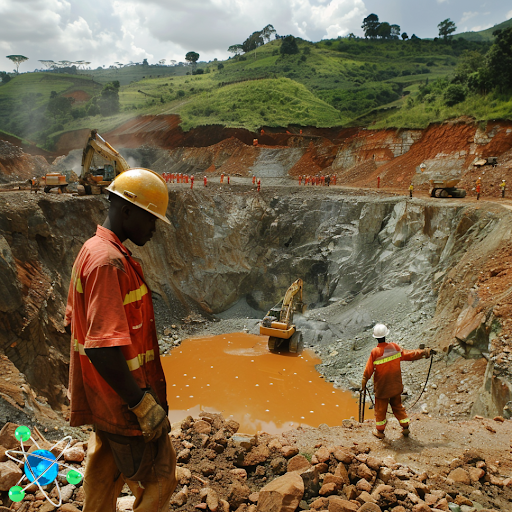
- The IAEA-led mission assessed Uganda’s infrastructure for uranium exploration, providing recommendations to help achieve Uganda’s nuclear energy goals, including developing a domestic uranium supply.
- Uganda aims to generate 24,000 MW of electricity from nuclear energy by 2040 to improve electricity access, with a goal of 99% accessibility by 2030, using domestically sourced uranium.
- The mission highlighted the need for Uganda to develop a skilled workforce and robust exploration program to identify and utilize potential uranium resources.
The Integrated Uranium Production Cycle Review (IUPCR) mission, led by the International Atomic Energy Agency (IAEA) and supported by its technical cooperation program, assessed Uganda’s infrastructure readiness for uranium exploration, marking the initial phase of its uranium production cycle program. This evaluation was conducted in response to a request from the Ugandan government.
The mission team comprises experts from Argentina, Australia, France, Namibia, and the International Atomic Energy Agency (IAEA). They evaluated 16 critical aspects, including human resource capacity and regulatory frameworks, to advise Uganda on achieving its nuclear energy objectives, including the development of a domestic uranium supply. The mission involved 82 participants, primarily from Uganda’s Ministry of Energy and Mineral Development, who engaged in various activities aimed at advancing Uganda’s nuclear energy ambitions.
Uganda is considering nuclear power as a component of its strategy to achieve its clean energy objectives and improve electricity accessibility for its nearly 50 million people. Currently, only approximately half of Ugandans have access to electricity, but the government aims to surpass a 99% electricity access rate by 2030. Uganda aims to achieve 24,000 megawatts (MW) of electricity from nuclear energy by 2040, representing nearly half of its projected total energy mix of 52,481 MW. This plan, approved by the Cabinet last year, also includes the goal of achieving an 80 percent grid access rate across the country. The country’s target is to commence nuclear power generation by 2031, utilizing domestically sourced uranium to support this initiative.
Several regions in Uganda have been identified as potentially rich in uranium, although no confirmed resources have been discovered yet. Exploration efforts to ascertain the presence of uranium involve activities such as conducting radiometric surveys and collecting geochemical samples.
Adrienne Hanly, the IAEA’s Technical Lead for Uranium Resources and Production, commented, “The potential discovery of a uranium deposit and subsequent development of uranium resources in Uganda presents an exciting opportunity for the country to support its ambition to introduce nuclear power into its energy mix. While significant work remains to be done, the Ministry of Energy and Mineral Development now has a solid understanding of what is required to succeed in evaluating the country’s uranium occurrences and the necessary next steps.”
The IUPCR team provided several recommendations aimed at supporting the development uranium exploration program in Uganda. These included emphasizing the need for Uganda to cultivate a skilled workforce for uranium exploration and accelerating the discovery, assessment, and development of potential uranium resources through the establishment of a robust and adequately funded exploration program.
“The government of Uganda is committed to adopting international best practices and this IAEA mission will ensure uranium exploration is done according to international standards,” said Ruth Nakabirwa Sentamu, Uganda’s Minister of Energy and Mineral Development.
